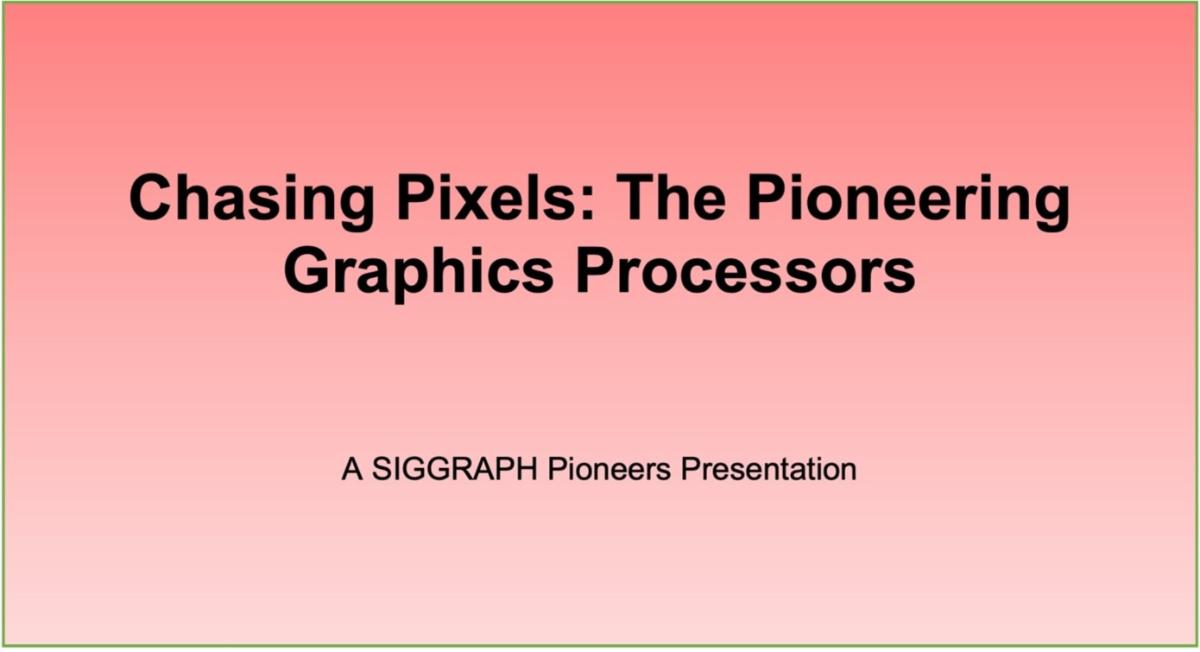Chasing Pixels: The Pioneering Graphic Processors – a SIGGRAPH Pioneers Presentation

Today’s GPUs are capable of amazing things, and as a processor type, have found their way into almost every imaginable electronics device—from cars to rockets, from TVs to smartphones, and of course game consoles and PCS. Yet, the journey that got us to the powerful Nvidia GeForces and AMD Radeons we use today was a long one, and we can thank many determined visionaries with blazing the path forward.
Recently, some of those scientists discussed their early work in a live virtual SIGGRAPH Pioneers Panel called “Chasing Pixels: The Pioneering Graphics Processors,” moderated by Jon Peddie, himself one of the pioneers in the graphics industry, and hosted by Ed Kramer, current chair of the SIGGRAPH Pioneers. As Peddie promised at the start of the presentation, “What you are going to be hearing tonight is an explanation as to how we got the GPU.” The panelists delivered on that promise.
“We take GPUs for granted today. I can assure you they didn’t always exist,” said Peddie, who just wrote a book about graphics processors called The History of the GPU, which will be available later this year. “It was no short trip,” he adds about that journey that led to the GPU.
The work toward GPU development, believe it or not, began back in the 1960s, and after a great deal of work, finally got to the point where we had a fully integrated GPU in the late 1990s! “It took Moore’s law and a lot of hard and creative work to get that integrated chip,” Peddie said.
In Karen Moltenbrey’s article GPUs: How did we get here? industry luminaries Nick England, Mary Whitton, Henry Fuchs, Steve Molnar, Marc Olano, Pete Segal, and Curtis Priem turn back the clock and highlight their groundbreaking research and work from yesteryear that led to the GPUs we use today.
Source:JPR

熱門頭條新聞
- Alibaba Sells Gao Xin Retail for HK$13.1 Billion
- “Paddington in Peru “, a Live-Action Animated Adventure Comedy Film
- Grand Prizes for “Beautiful Man” and “Memoir of a Snail” at Cinanima 2024
- FragPunk’s March 6th 2025 Release Date Revealed at The Game Awards
- Asfalia: Fear Debuts In January
- Nordic Game 2025: Good Things Ahead
- Battery Note+UNDERGROUNDED will release in 2025!
- Sugardew Island – Your Cozy Farm Shop Launches for PC and Consoles in March 2025!
